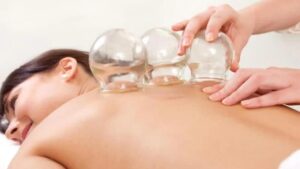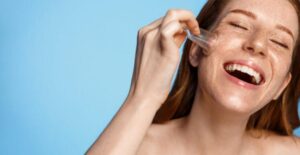Cupping therapy has been around for ages in traditional medicine and alongside boosting your health, isn’t it an intense experience? However, the soreness, pressure, and symptoms of flu are all worth it in the big picture when the results hit.
But there are a few rules to follow for the best possible results and avoid any issues or side effects, especially showering which can stimulate some serious reactions.
So here we are with everything you should be equipped with for the smoothest cupping experience. Stay tuned to get your cupping done right!
What Happens During Cupping?
Cupping is a method of alternative medicine in which a therapist puts specially crafted cups on the skin for a few minutes to create a suction.
People get this done for many purposes, including to help with pain, inflammation, stimulated lymph and blood flow, relaxation, and overall well-being.
To begin, the cups are initially either pumped manually or heated with fire to create a suction. Putting cups on your skin and using heat helps draw out air, creating a gentle suction.
During the process, you’ll notice skin rising under the cup, expanding the blood vessels. The cups are then left on your skin for several minutes although the whole process doesn’t take too long and isn’t that painful either- well, if you can swallow the initial pressure blow, it does get easier.
The cupping process has evolved, and today it’s widely used by athletes for pain relief and musculoskeletal injuries, such as strains, sprains, back injuries, and inflammation. So quite a handy little treatment, eh?
Recommend reading: Top 10 Best Rain Shower Head Reviews
So What’s the Deal with Cupping And No Showers?
You shouldn’t take a shower right after a cupping session unless you want your skin crying out of sensitivity.
Cupping opens your pores to draw air out so your skin is naturally supposed to feel sensitive and vulnerable, particularly when the treated areas and the pores remain open for a couple of hours following the treatment.
So avoid taking a bath right after cupping therapy, as water contains a lot of bacteria and other germs and it can cause skin disease and infections.
Also, taking a shower, particularly a hot one, may result in inflammation and can damage the skin due to a change in temperature where the first thing in your body that reacts is your skin, considering it’s the first thing exposed.
Recommend reading: Top 5 Best Delta Magnetic Shower Head Reviews with Handheld Shower Head Combo
So How Long Do I Have to Wait Before Showering?
One must wait at least three hours after a cupping session before deciding to hop into the shower. It gives your open pores time to close, and sensitive skin time to calm down, allowing the blood circulation to settle and normalize. However, some cupping practitioners recommend avoiding showers for at least six hours after the cupping session.
But if your skin doesn’t feel too down three hours later, then it should be safe to take a shower. However, people can have different experiences after cupping sessions depending on their skin type.
Sometimes, your skin will be a bit tender to the touch. Sometimes, it might be a little more towards the painful spectrum. If this is the case, you will want to wait longer before taking a shower after your cupping.
If a little bruising, scarring, or swelling is experienced where the suction cups were placed, check if these symptoms are gone the next day before turning on the shower knobs. If not, then you can still clean the area with a soft, damp sponge.
Recommend reading: Best Waterfall Shower Head Reviews
How About a Shower Before a Cupping Session?
Of course! You’re allowed to shower before the session. Showering, and even hair removal are great because it makes it difficult for the cups to create suction.
Taking a hot bath will be helpful in softening the muscles to help maximize the extraction of toxins.
The “Dos and Don’ts” of Cupping Aftercare
Dos:
1. Choose a clinic practicing the best hygiene
Pretty self-explanatory of how important this step is for preventing infection and scarring as a result of poor cupping treatment. The side effects are preventable if the clinic you choose is professional and well-run.
2. Ensure the right equipment is used
Before you start your treatment, make sure your therapist is using the proper protective equipment like gloves, gown, mask, and correct hand sanitizers and disinfectant techniques.
Cups should be completely sterile before they’re put on the skin. Note that disposable equipment is the best and is preferable to sterilized equipment to completely minimize the risk of infection.
3. Nourishment before treatment:
Also make sure you eat a small meal that can be easily digestible within two to three hours of your treatment as feeling nauseous, dizzy, and lightheaded after a cupping treatment is possible if you’re hungry.
4. Rest and recover:
The above side effects are completely normal and should pass shortly after your treatment has concluded. Going to bed early will subside these symptoms too. Fatigue after a cupping session is usual too, as your body works overtime to process the toxins released as a result of the treatment.
So listen to your body and make sure you get to bed at a reasonable time and take ample sleep to give your body and skin a chance to properly recover.
Don’ts:
Swims, Sauna, or steam rooms:
As cupping opens the pores and makes you more susceptible and vulnerable to infections you should ultimately avoid doing anything that could infect your body – this includes showering, swimming, and visiting saunas or steam rooms.
Vigorous Exercise:
It is advisable to avoid intense exercise for at least 24 hours after cupping treatment so as to avoid putting unnecessary pressure on your body.
If you’re really feeling like moving or working out then opt for some light physical activity, such as stretching or yoga.
Sunbathe:
Don’t expose yourself to the sun for at least a whole day after your cupping treatment, as the skin might get irritated or burned while already being vulnerable.
But if you’re not feeling like denying a trip to the beach, you’re going to have to cut out the sunbathing and tanning and have clothes on- at least enough to cover the cup marks and the skin around. Now sweaty or nothing is totally your choice.
Conclusion
From chronic inflammation problems to simple strains and pains, cupping is the way to go as most therapists use it frequently in combination with modern methods.
And much to our fortune, multiple patients have reported a great success in their recovery when they were treated with cupping so let’s reinforce its effectiveness by following its rules right and we hope our guide covers that for you. Happy healing!
Recommend reading: Evaluating The Top 8 Popular Pulsating Shower Heads


